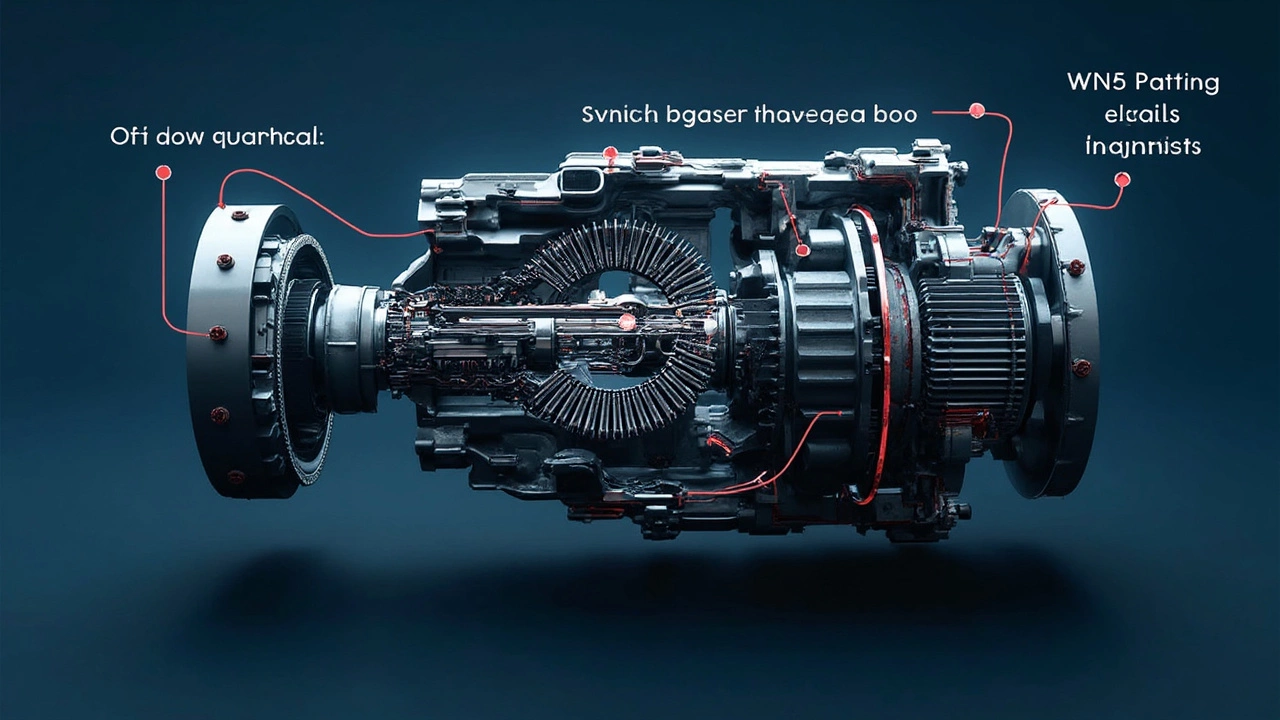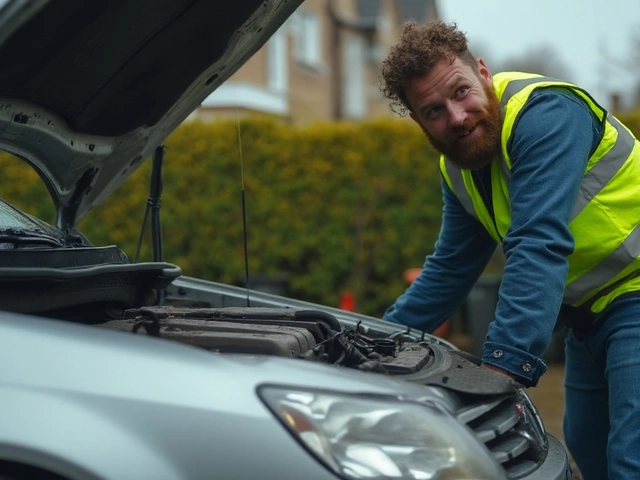Ever had that gut feeling your car isn't performing quite like it used to? It might be your clutch acting up! A slipping clutch can sneak up on you, making your ride rougher and your car noisier than it needs to be. Spotting the signs early can save you heaps of trouble down the road.
So, what do you look for? Start with your car's response when you hit the gas. If the RPMs soar but you're not speeding up as you should, your clutch could be slipping. Feel like you're driving in thick syrup? Another telltale sign.
Now you might wonder, what causes a clutch to slip? Is it worn out, or is there something else at play? Whether it's wear and tear or oil leakage, knowing the root cause is crucial for fixing it right. Don't worry, simple checks can point you in the right direction before things get serious.
- Introduction to Clutch Slipping
- Common Signs and Symptoms
- Causes of a Slipping Clutch
- Simple Tests to Confirm
- Tips for Maintenance and Repair
Introduction to Clutch Slipping
If you're cruising along and suddenly notice your car isn't accelerating like it used to, the problem might be clutch slipping. But what does that actually mean? Essentially, a slipping clutch means it's not engaging and disengaging properly, which can lead to a lot of frustrating driving issues.
When you hit the clutch pedal, you’re temporarily disconnecting the engine from the transmission to change gears. If this process doesn't go smoothly because the clutch isn't gripping as it should, then you have what we call a 'slip.' This usually happens when the clutch wears out over time, but there can be other culprits too.
Why Should You Care?
A slipping clutch isn't just a mechanical hiccup. It can really impact your driving experience, from annoying delays in acceleration to potential safety hazards when you need to make quick maneuvers. Plus, ignoring it can cause further damage that might cost you a bundle in the future.
Typical Lifespan and Concerns
Most clutches last between 50,000 to 100,000 miles depending on your driving habits. Aggressive driving can reduce its lifespan significantly. Regular maintenance is key to keeping your clutch in top shape.
| Usage Type | Expected Clutch Life |
|---|---|
| City Driving | 50,000 - 70,000 miles |
| Highway Driving | 70,000 - 100,000 miles |
Keep this table in mind next time you're wondering about your clutch's health. Driving environment and style will play major roles in how often you'll need to address clutch slipping concerns.
Common Signs and Symptoms
Spotting a slipping clutch early can save you from bigger headaches down the line. Here's what you should be on the lookout for:
Strange RPM Behavior
If you notice the RPMs climbing but the speed isn't increasing like it should, that's a classic sign of clutch slipping. It's like your engine is working hard, but your car isn't feeling it.
Choppy Acceleration
Another symptom is jerky or uneven acceleration. You'll hit the gas expecting a smooth ride, but instead, it feels patchy or inconsistent.
Unusual Sounds and Smells
A slipping clutch often comes with a few unwanted noises. Grinding sounds or a burning smell are telltale signs that something is off under the hood.
- Grinding or squealing noises
- Burning smell—similar to the odor of burnt toast
Poor Gear Engagement
Finding it tough to engage gears smoothly? If shifting feels clumsier or requires more effort, the clutch might not be engaging properly.
High Clutch Pedal
If your clutch pedal feels higher than normal when shifting, it points to potential issues. It’s a subtle cue, but worth noting.
Don’t let these signs go unchecked. Ignoring them could lead to more serious problems with your clutch kits, and you don't want to deal with that kind of hassle.

Causes of a Slipping Clutch
If you're noticing that your clutch is slipping, there are a few key culprits you might want to check out. These are the usual suspects behind a clutch slipping problem:
1. Worn Out Clutch
Probably the most common cause is just plain old wear and tear. Over time, the friction material wears down. Think of it like your brake pads—more use means more wear. If your car’s packing on the miles, especially in city traffic, it might be time for a new clutch.
2. Oil or Fluid Leakage
Oil or other fluid leaking onto the clutch can cause all sorts of issues. A contaminated clutch surface won't grip well, leading to slippage. Keep an eye out for oil spots where you park; they might lead you to the leaky source.
3. Driver Error
Don’t shoot the messenger, but sometimes we’re the problem! Resting a foot on the clutch pedal (“riding the clutch”) or improper shifting can wear out the clutch prematurely. Let’s drive with care.
4. Improper Adjustments
If you've recently had work done and you're noticing slippage, there might be an adjustment issue. A too-tight cable adjustment can lead a clutch to stay partially engaged, which wears it out faster.
5. Manufacturing Defects
It’s rare but not impossible. Sometimes parts come with flaws. If your clutch is on the newer side and slipping, the defect could be the sneaky reason.
| Common Cause | Percentage of Cases |
|---|---|
| Worn Out | 50% |
| Fluid Leakage | 20% |
| Driver Error | 15% |
| Improper Adjustments | 10% |
| Manufacturing Defect | 5% |
If you're seeing any of these signs, it’s best to get your clutch checked by a pro. Solving the issue sooner than later can save you a bundle and keep your car running smoothly.
Simple Tests to Confirm
Ready to see if your clutch is actually slipping? You can do a few simple tests right in your driveway to check things out. You don't need any fancy tools, just a keen eye and a bit of patience!
Test While Stationary
This first test is pretty straightforward. Make sure your car is on a flat surface, then:
- Start the engine and let it idle.
- Shift into a higher gear, like third or fourth.
- Try to start moving by gently releasing the clutch.
If the engine stalls (and it should if things are normal), your clutch isn't slipping too badly. But if the engine still runs and the car doesn't move, it's a give-away sign the clutch is gone.
RPM Check
Next, try the RPM check while driving at a steady speed:
- Drive on a quiet road and get the car to about 2000-3000 RPM in fourth or fifth gear.
- Press down on the throttle and remember how the car responds.
If the RPMs jump without the car accelerating at the same rate, your clutch could be slipping. As car expert Mike Rutherford says,
"A sure sign is your car revving without the boost in speed - like a sprinter trying to run in sandals."
Find the Sticky Clutch
Look out for these extra hints too:
- A burning smell around the hood.
- Difficulty in changing gears smoothly.
Remember, the sooner you confirm a slipping clutch, the better your chances of avoiding expensive repairs down the line. It's always helpful to catch these things early!

Tips for Maintenance and Repair
Taking care of your clutch doesn't have to be rocket science. Regular maintenance can extend its life and save you from costly repairs. Let’s jump into some practical tips to keep your car running smoothly.
Regular Inspections
Start by routinely checking your car's clutch system twice a year. Look for signs of wear and any unusual behaviors. If you hear noises or feel vibrations when pressing the clutch, it might be time for a check-up.
Avoid Riding the Clutch
Keep an eye on how you handle the clutch pedal. Resting your foot on the clutch while driving can wear it down faster. Make it a habit to only use the clutch when you need to shift.
Immediate Repairs
When you notice something’s off, address it promptly. A simple fix now could prevent a major overhaul later. As car expert John Carmichael puts it,
"Ignoring clutch issues is like ignoring a toothache—it only gets worse."
Use Quality Clutch Kits
When repairs are necessary, always go for high-quality clutch kits. Cheap replacements might save you a buck initially, but they often lead to more headaches down the road.
Keep Tabs on Fluids
Your clutch system requires specific fluids to operate efficiently. Low or dirty fluid can cause the clutch to behave erratically. Keep those fluids topped up and replace them as recommended in your vehicle's manual.
Driving Habits That Save the Clutch
- Shift smoothly and avoid abrupt starts and stops.
- Don’t hold the car on an incline with the clutch; use the hand brake instead.
- Stick to neutral when idling for a long time.
These tips aren’t just about extending the life of your clutch; they’re about enhancing your whole driving experience. By spending a little more attention on these aspects, you’ll be doing both your wallet and your car a favor.


